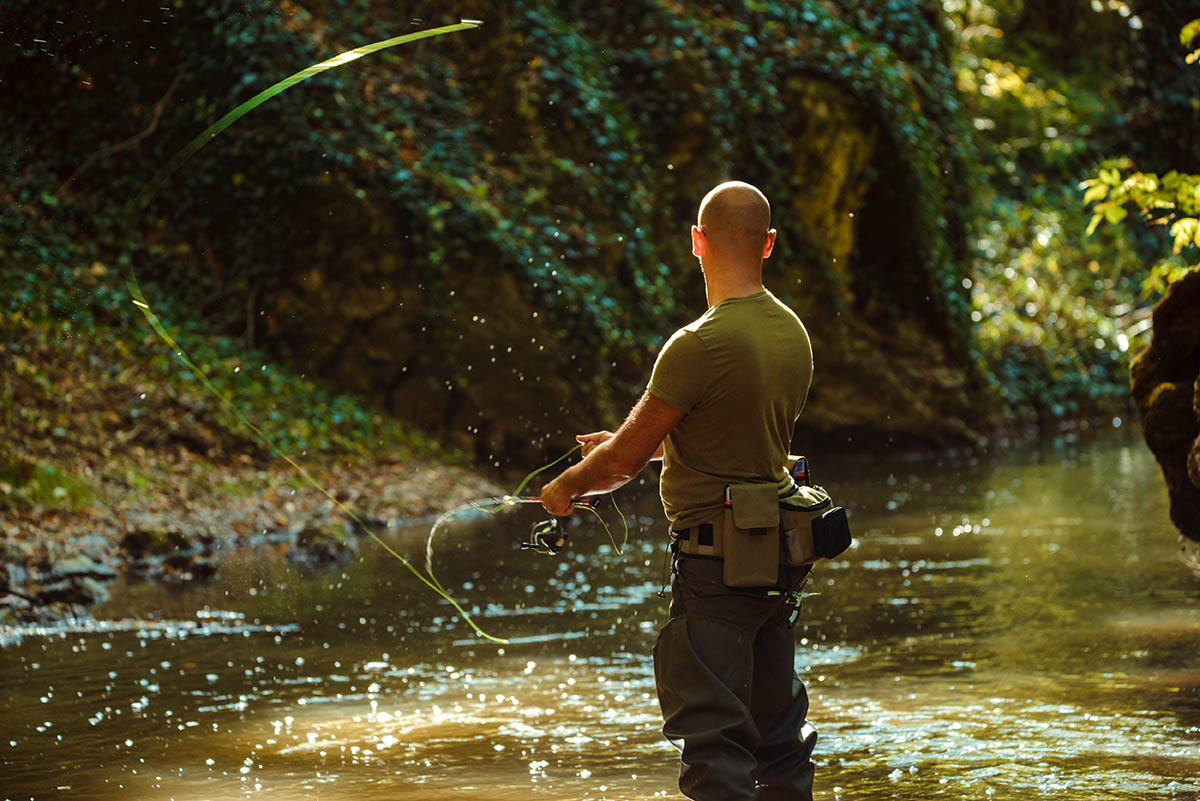Introduction
Fly fishing is an art as much as it is a sport. By learning fly fishing basics will bring about understanding the delicate dance between angler, equipment, and nature. For beginners, entering the amazing realm of fly fishing can seem daunting, but with the right guidance, it quickly becomes a rewarding and lifelong passion. This comprehensive guide aims to demystify fly fishing for the beginner, offering practical tips and techniques to help you embark on your fly fishing journey.
Understanding Fly Fishing
What is Fly Fishing?
Unlike traditional fishing, fly fishing involves using a lightweight lure, known as a fly, to catch fish. The fly is cast using a fly rod, reel, and specialized weighted line. This technique is especially effective in catching trout and salmon but is also used for a variety of species including bass, pike, and carp.

The Appeal of Fly Fishing
Fly fishing is revered for its graceful technique and the connection it fosters with the natural environment. It’s a sport that requires patience, skill, and a bit of creativity. It’s also a great way to relax and unwind, often taking place in some of the most picturesque settings.
Getting Started with Fly Fishing Basics
Essential Gear
To begin your fly fishing adventure, you’ll need a few key pieces of equipment:
- Fly Rod: Your primary tool. Fly rods vary in length, weight, and material. Beginners should start with a medium-action rod as it offers a good balance between power and control.
- Fly Reel: This holds the fly line. It should match your rod’s weight and have a smooth drag system.
- Fly Line: A specially weighted line that allows you to cast your fly. It should match the weight of your rod and reel.
- Leader and Tippet: These connect the end of your fly line to the fly. They are usually clear, ensuring that fish are not spooked by the line.
- Flies: The lure used in fly fishing. Flies come in various types like dry flies, nymphs, and streamers, each serving different fishing conditions and fish species.
Fly Fishing Basic Techniques
- Casting: The heart of fly fishing. It involves a unique technique where the line is cast rather than the lure. The most common is the overhead cast, where the line is whipped back and forth over the head.
- Reading Water: Learning to read the water is crucial. It helps in understanding where fish are likely to feed and rest.
- Fly Selection: Choosing the right fly is critical. This depends on the species you’re targeting and the conditions of the water.
Practice Makes Perfect
Start by practicing your casting technique in an open area. Gradually, as you become more comfortable, you can practice on the water.
Understanding Fish Behavior
Knowing Your Target
Different fish species behave differently. Trout, for example, often feed in currents and require a different approach than stillwater fishing for bass.
The Importance of Stealth
Fish are easily spooked. Move slowly and quietly, blend in with your surroundings, and be mindful of your shadow on the water.
Conservation and Ethics
Fly fishing is deeply rooted in conservation. Practicing catch and release, respecting local regulations, and being mindful of the ecosystem is part of being a responsible angler.
Conclusion
Fly fishing is more than just catching fish; it’s about the experience, the learning, and the connection with nature. As you embark on your fly fishing journey, remember that every cast brings a new lesson and each day on the water adds to your repertoire of skills and experiences. Welcome to the wonderful world of fly fishing – a journey of continuous learning and enjoyment.
This article serves as a beginner’s guide to fly fishing, covering the basics of gear, techniques, and understanding fish behavior. By adhering to the principles of conservation and ethics, new anglers can enjoy and contribute to the sport responsibly. Happy fishing!
Recommended Resources for Fly Fishing Basics
We have provided a summary of this great resource via the link below:
“The Orvis Guide to Beginning Fly Fishing: 101 Tips for the Absolute Beginner” by Tom Rosenbauer


